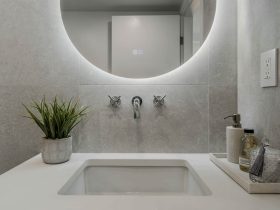Water pressure issues can significantly impact daily comfort in condominium units, yet many buyers overlook this critical factor when evaluating potential homes. Insufficient pressure can transform simple tasks like showering or washing dishes into frustrating experiences, while excessive pressure may damage fixtures and increase the risk of plumbing failures. During a recent property inspection at Zion Road Condo, professional home inspectors demonstrated specific techniques for evaluating water systems beyond simple faucet testing. These comprehensive assessment methods reveal potential issues that might otherwise remain hidden until after purchase, saving buyers from unexpected complications and expenses.
Building infrastructure questions
Understanding a building’s water system provides essential context for unit-specific pressure concerns. Ask management about the building’s primary water supply source—municipal connection or private well—as this fundamentally affects pressure consistency and quality throughout the structure. Inquire about building-wide pressure regulation systems that might be in place. Many high-rises utilise booster pumps on lower floors and pressure-reducing valves on higher floors to maintain consistent pressure throughout the building despite natural pressure variations caused by elevation changes. Request information about recent plumbing upgrades or infrastructure improvements related to water delivery systems. These details reveal whether the association actively maintains these critical systems or defers necessary updates that might eventually impact performance and resident satisfaction.
Unit-specific evaluation
When touring specific units, assessment should include practical tests beyond simply turning on faucets:
- Run multiple water sources simultaneously (shower, sink, toilet)
- Check pressure differences between hot and cold water
- Test pressure during typical high-demand periods (morning/evening)
- Observe water flow patterns for inconsistency or pulsation
- Check for pressure differences between bathrooms
- Compare water pressure on different fixtures in the same room
- Time how quickly a bathroom sink fills to evaluate volume
- Note any unusual noises when water is running at full volume
Low-flow fixtures installed for conservation purposes can sometimes mask underlying pressure issues, making these comprehensive tests particularly important. Removing aerators (with permission) can provide more accurate pressure assessments during brief tests.
Critical documentation review
Examining building documentation reveals valuable information about potential pressure concerns that physical testing might miss. Review association meeting minutes from the past 1-2 years for any mentions of water pressure complaints, plumbing projects, or infrastructure discussions. Examine the condo association’s reserve study to determine whether appropriate funds are allocated for future plumbing infrastructure maintenance and upgrades. Inadequate reserves for these systems often indicate potential future problems as components age and deteriorate. Request information about water pressure complaints from both current and former residents.
Professional inspection insights
Consider these professional assessment approaches before finalising any purchase:
- Static pressure testing using calibrated gauges
- Flow rate measurements at multiple fixtures
- Pressure logging over 24-48 hours to identify fluctuations
- Camera inspection of internal pipes for buildup or damage
- Evaluation of unit-specific pressure-regulating valves
- Assessment of fixture condition and compatibility with building systems
Licensed plumbers can provide these comprehensive evaluations when standard home inspectors lack specialised equipment or expertise. This investment offers peace of mind regarding a system affecting daily comfort.
Temporary pressure issues during inspection may indicate broader municipal water system maintenance or seasonal fluctuations rather than building-specific problems. Consulting local water authorities about system work or seasonal patterns provides valuable context for evaluation results that might otherwise cause unnecessary concern.






